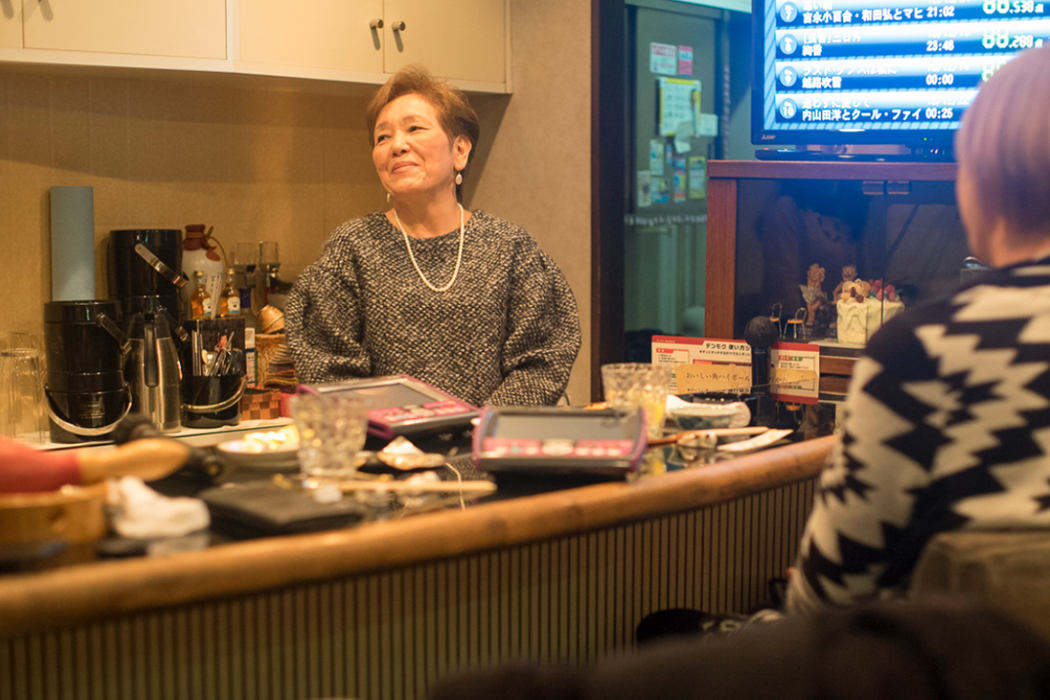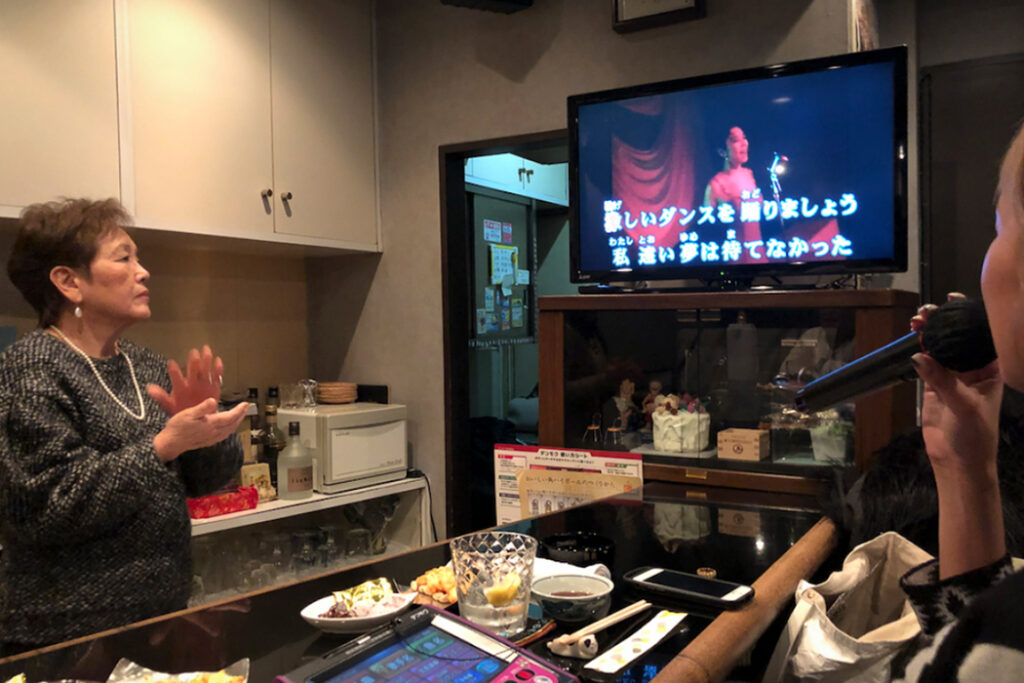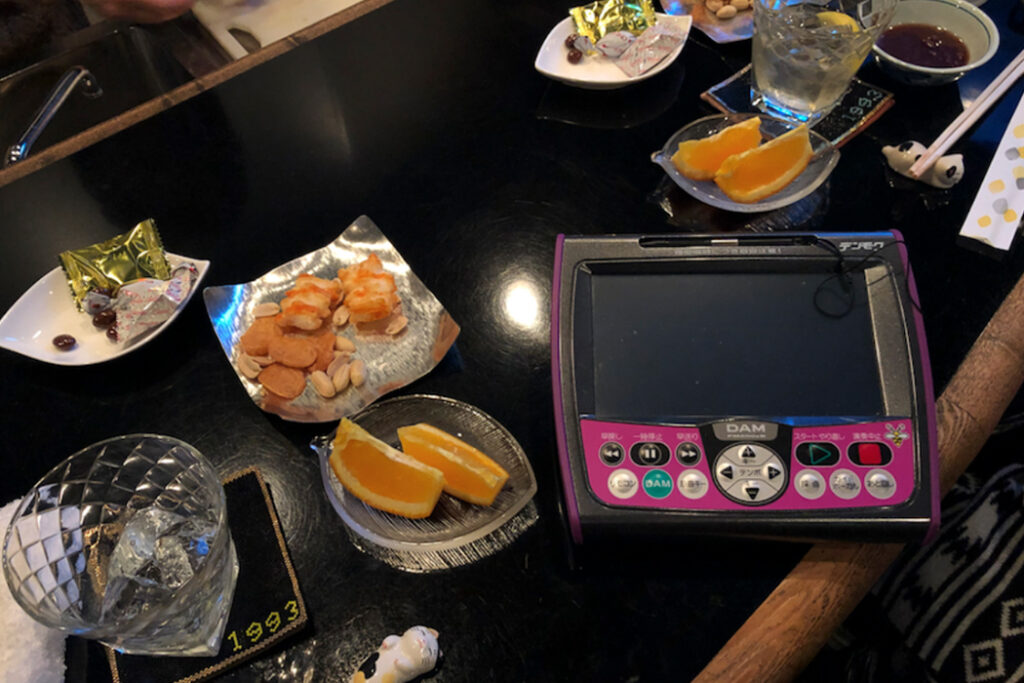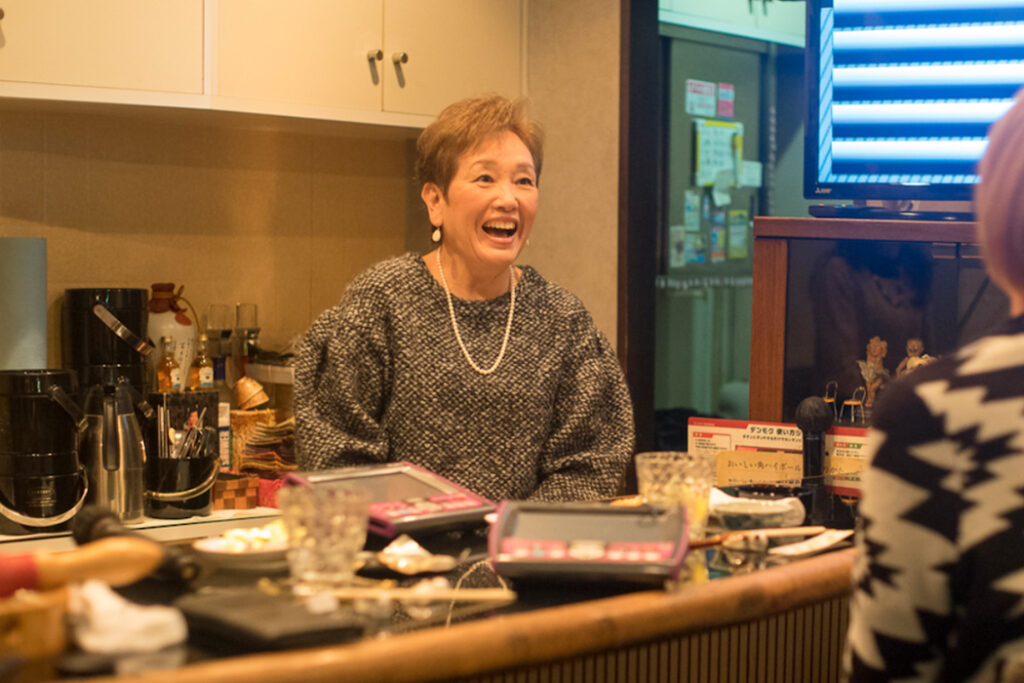Michiko-san, 1993

Through my Japanese teacher, I was recommended to go to a snack located in the southwestern area of Tokyo, a small but lively neighborhood called Gakugei-daigaku (try saying that 10 times fast). The mama heard we were coming and invited us into their 2nd story snack. We found out there was going to be a Gakugei Festival, where you could spend ¥1500 (~$15) on a wristband and bar hop to try out the local restaurants in the area. The mama gave us a map (which she designed) that showed some other nearby snacks that were participating in the event. As the place filled up with old patrons, we finished our small home cooked meal of stew and grilled fish with pickles and went out to explore a place that caught my eye on the map.
Just a few blocks away was a narrow neighborhood pedestrian road where I spotted a bright yellow awning that had a nice solid font that read “1993”. I liked the sound of that. Without introduction, we nervously peeked through the glass door to see the lights on, but it was empty. I bravely shoved my friend (and translator) Fiona ahead of me, as to not startle the mama-san with my blonde, foreign presence. We gently entered, like approaching a lone street cat to try and pet it. She seemed confused as to why we would randomly enter her snack, but welcomed us anyway.
The snack was immaculate. Beyond the counter, there was enough room for a couple of grey velvet booths. The entrance was adorned with tall wood and glass cabinets full of bottles with name-tagged bottles for customers to drink from whenever they please. We learned the ceiling had water damage a few years back and they had renovated and updated the place, yet it still felt stopped in time. We sang and drank as the mama kept making sure I had my fill of snacks. Rice crackers, home-cooked vegetables in beef broth, individually wrapped chocolates and a night cap of a cut and peeled pear. During our visit, an elderly woman followed by a man with stark white hair came to sing old songs and have one drink each. Locals to the area, they arrived separately and had been coming to this snack for years. I had a train to catch, so we told Michiko we would return to learn more about snack culture from her.
Upon our second visit, Michiko’s face lit up, happy we came back. Now we are regulars!
Alex: Tell us about yourself...
Michiko: I worked at a bank out of school. Married at 25, had my first child at 26. I live with my husband, daughter and son-in-law. We have one cat and one dog. I’m turning 71 this month.
Alex: What are the other snacks like in this area?
Michiko: There’s another snack in this area that’s membership only, the mama-san owns a few places in Ginza as well. It’s a new style that she’s trying out.
Alex: Do you meet up with the other mamas? Is there a community for the snacks?
Michiko: We have Food & Beverage meet ups once a month. I’m on the board as well. The mama-sans are getting older so it’s difficult to meet up with them. We do try to help the younger kids with Matsuri’s (festivals) and such.
Alex: How long have you worked as a snack mama?
Michiko: This snack has been open for 26 years. I do this as a hobby. I don’t care about making a profit. As long as what I make pays for everything. The most difficult part is paying the girls. I have five different girls working during the week. Typically just one girl a night with me. I’m getting older so I need some assistance during the nights when it gets busy which is towards the end of the week.
Alex: What’s the meaning behind the name 1993?
Michiko: I used to be a customer here. The previous owner was retiring and offered it to me to carry on. I re-named the snack 1993, the year I took it over.
Alex: What did your kids think about you doing this business?
Michiko: I started when my daughter was older and in High School. She would have been upset if I started when she was younger, it’s just the way society looks at you.
Alex: What kinds of clients do you have here?
Michiko: The newer generation doesn’t come to snacks anymore. I think a lot of them can’t drink alcohol or don’t enjoy it. Also, I feel like they are self-centered and don’t want to interact with other people, kind of anti-social if you will. That’s why they go to places like izakayas (after work spots for food and drink) and keep to their own group of friends or go to Karaoke boxes. Back then, the bosses would bring their juniors to places like snacks but kids these days don’t want to socialize with their bosses outside of work. This is why snacks are full of older men. And when they do come, they think it’s a burden that they have to talk to older people. It’s rare to see young men at snacks these days.
Alex: Where did you learn to cook?
Michiko: learned to cook from my mother. I try to cook things that are saltier to serve here because everyone is drinking. Salty foods go great with alcohol! Nimono is my favorite dish. (It’s a traditional Japanese dish. Simmered vegetables with meat or fish).
Alex: Do you think the snack culture is dying?
Michiko: Yes but we are trying to keep it alive! This area has the most snacks on the Toyoko line.
Find the interviews with the other snack mamas here:


